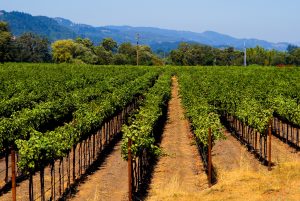A multi-state research project aimed at helping growers make better-informed decisions using vineyard management technologies continues to make progress. The Efficient Vineyard Project looks to develop science-driven, precision viticulture systems to better manage vineyard variation. One of the main focal points for the project is the collection of spatial data and transforming it into actionable information.
“It’s a USDA funded specialty crop research initiative  project and it looks at taking spatial data collected from sensors that we drive through the vineyard, processing that data and then being able to actually use that data in our vineyard management,” said Terry Bates, Director of the Cornell-Lake Eerie Research and Extension Center and Project Director of the Efficient Vineyard Project.
project and it looks at taking spatial data collected from sensors that we drive through the vineyard, processing that data and then being able to actually use that data in our vineyard management,” said Terry Bates, Director of the Cornell-Lake Eerie Research and Extension Center and Project Director of the Efficient Vineyard Project.
Bates noted that the project is taking what growers have always been doing in managing their vineyards but making it more precise through the implementation of various technologies. “We’re using sensors to make those measurements spatially, and then talking to the grower to make a decision spatially and…do that same vineyard management he was going to do anyway but just add that layer of technology on it where it’s being done automatically,” Bates said.
Data collection is a major component of the research, but the amount of information that is collected can be so significant it is rendered nearly useless. The development of vineyard management technologies includes the collection of vineyard data and processing that information with multi-data layering to establish a simplified and actionable plan that can be executed.
“We come up with prescription maps and we have it talk to the machines that are driving through the vineyard. So, if I’m pruning, shoot-thinning, fruit-thinning, we’re having that spatial data talk to the machine so that the machine changes what it’s doing in the vineyard as it goes from one end to the next,” said Bates.










